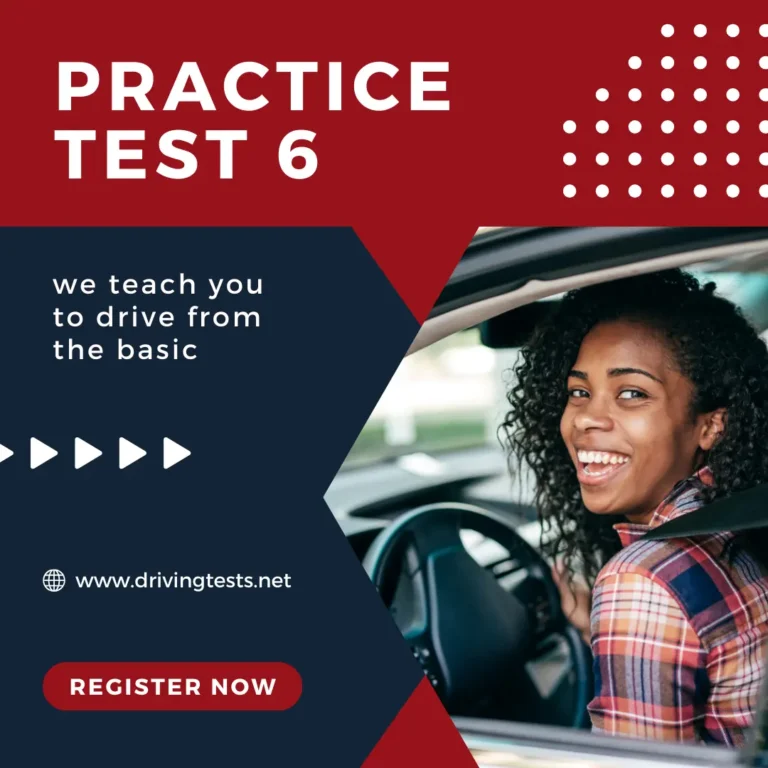G1 Drive Test Practice Questions 5
The Ontario G1 Drive Test Practice is a practical test that evaluates the ability of a driver to drive a car safely while adhering to traffic laws. The test includes a variety of driving situations, such as city driving, highway driving, and parking maneuvers. The driving test must be passed to obtain a full-G driver’s license in Ontario.
Ontario G1 Drive Test Practice Questions:
Practice questions are an important part of the preparation for the Ontario Drive Test. While it is a practical test, it also helps you familiarize yourself with the rules of the road and traffic regulations. The questions are a great supplement to the hands-on driving practice. They will help you become familiar with Ontario’s traffic laws, rules, and nuances.
Practice Questions for the G1 Drive Test Practice:
- Traffic rules: G1 Drive Test Practice Questions include a variety of rules and regulations. You can reinforce your knowledge of traffic rules and regulations by answering these practice questions.
- Road Sign Recognition Enhancement: G1 Drive Test Practice Questions often include scenarios involving road signs. It helps you improve your ability to quickly and accurately recognize different signs.
- Simulating Real Driving Scenarios: The G1 Drive Test Practice Questions simulate realistic driving situations. These questions will expose you to different situations that you might encounter while driving, and help you develop critical thinking.
- Enhancing Confidence and Familiarity: Practice with Ontario Drive Test test questions regularly to boost your confidence. You’ll be more comfortable on test day as you get used to the questions.
Practice Questions for the Ontario Driving Test:
- Intersection Scenarios: A variety of intersections are presented in the practice questions to assess your knowledge and understanding on right-of-way rules, safe navigation at intersections, as well as signaling.
- Parking Maneuvers: Parking maneuver questions test your parking skills. You will be asked about parallel and perpendicular parking, as well as parking restrictions.
- Road Driving Techniques: Some practice questions will focus on skills such as merging onto highways and changing lanes or maintaining a safe distance when driving at high speeds.
- Emergencies:Some questions are designed to help you prepare for emergency situations such as sudden stopping, evasive maneuvers, or unexpected road obstacles.
- Ontario Drive Test Preparation: Practice questions that are specific to the Ontario Drive Test will help you prepare for it. The questions are based on a variety of situations, which ensures a thorough understanding of practical driving aspects.
- Driving Practice Questions: Practice driving test questions to improve your skills. The questions are based on real life scenarios and will help you to develop skills for the practical exam.
- Practice and Tips for the Ontario Driving Test: Learn tips and strategies to prepare for the Ontario Drive Test. The practice questions are a great way to familiarize yourself with the format of the test and improve your driving abilities.
- Practice Intersection Navigation for Driving Test: Practice questions will help you to master intersection navigation and pass the Ontario Drive Test. Improve your knowledge of intersection safety and right-of-way rules.
- Efficient Parking Practice for G1 Drive Test Practice: Practice parking questions to improve your skills before the Ontario Drive Test. The scenarios include parallel parking, parking in a perpendicular position, and parking with restrictions.
- Practice Tests on Highway Driving: Practice questions will help you improve your skills on highways for the Ontario Drive Test. These questions will prepare you for scenarios on the highway. They cover merging, changing lanes, and following safe distances.
- Practice Emergency Situations for Driving Test: G1 Drive Test Practice Questions will help you improve your skills in handling emergency situations when taking the Ontario Drive Test. You can practice braking and evasive manoeuvres as well as responding to obstacles.

Practice questions are a crucial part of preparing for the Ontario Drive Test. You can improve your driving skills in Ontario by immersing yourself in scenarios that mimic real-life driving situations. The strategic integration of practice tests into your routine will contribute to your confidence and your success at the Ontario Drive Test.






